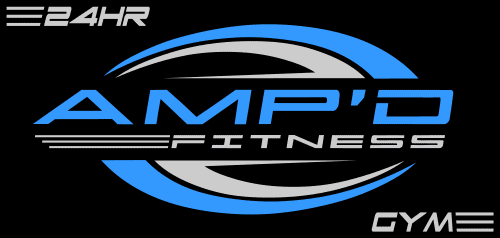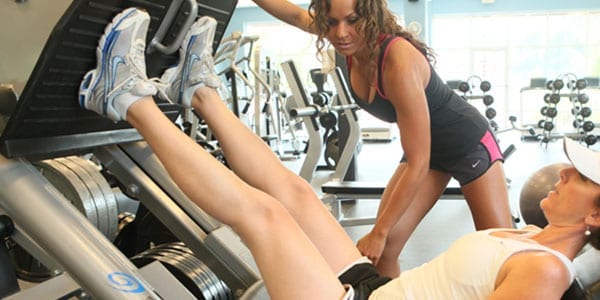SUPERSETS

Overview
Supersets or performing two exercises one after the other is possibly one of the oldest forms of strength training.
This increase in training density combined with short rest intervals is a perfect formula for boosting muscle hypertrophy, increasing training intensity and improving body composition.
In the case of supersets, overzealous gym goers often slap together arbitrary exercises in an attempt to make their workout more intense, thereby rendering the superset and the workout greatly ineffective. Let’s now look at how we can improve the technique.
Performing the superset
To perform a superset, choose two exercises and complete them both with little to no rest between. Importantly with superset training, you will need to have both pieces of equipment nearby and ready to go. Typical rep range for the superset is 8-15 reps per exercise, with a total of 16-30 reps for the complete set. There are 3 main variations of supersets.
Same Muscle Group Supersets (Compound Supersets)
A Superset that involves using two exercises that target the same muscle group is known as a Compound Superset. Compound Supersets are commonly used to completely exhaust a muscle group and break down the muscle fibres to promote new growth. Most common of the compound superset is to complete a compound movement first followed by a second isolation exercise. Some examples are;
Chest: Barbell Bench Press Superset with Dumbbell Flyes, or Incline Dumbbell Press Superset with Cable Crossovers
Back: Barbell Rows Superset with Pull-ups, or Wide Lat Pulldowns Superset with Cable Pullovers
Shoulders: Dumbbell Press Superset with Dumbbell Lateral Raises, or Barbell Upright Rows Superset with Reverse Dumbbell Flyes
Biceps: Barbell Curls Superset with Cable Curls, or Incline Dumbbell Curls Superset with Preacher Curls
Triceps: Close Grip Bench Press Superset with Tricep Kickbacks, or Skull Crushers Superset with Rope Triceps Extensions
Quads: Barbell Squats Superset with Leg Extensions, or Leg Press Superset with Walking Lunges
Hamstrings: Stiff Leg Deadlifts Superset with Seated Hamstring Curls, or Barbell Hip Thrusts Superset with Nordic Leg Curls
Calves: Leg Press Calve Raises Superset with Standing Dumbbell Calve Raises, or Standing Machine Calve Raises Superset with Seated Calve Raises
Opposing Muscle Group Supersets (Opposing Supersets)
Supersets that pair opposing (antagonistic) muscle groups such as chest & back, or quads & hamstrings are known as Opposing Supersets. Here are some examples;
Chest/Back: Dumbbell Bench Press Superset with Bent Over Dumbbell Rows, or Cable Fly’s Superset with Lat Pulldowns
Quads/Hamstrings: Leg Extensions Superset with Hamstring Curls, or Barbell Squats Superset with Romanian Deadlifts
Biceps/Triceps: Barbell Curls Superset with Ez Curl Skull Crushers, or Biceps Cable Curls Superset with Triceps Pushdowns
Non-Opposing Muscle Group Supersets (Alternate Supersets)
A less popular variation is to perform Supersets using different muscle groups that are non-opposing, such as chest & biceps or shoulders & calves. These are known as Alternate Supersets. Some examples of Alternate Supersets are as follows:
Chest/Biceps: Incline Dumbbell Press Superset with Dumbbell Curls
Back/Triceps: Cable Rows Superset with Dumbbell Overhead Extensions
Shoulders/Calves: Dumbbell Lateral Raises Superset with Machine Calve Raises
Workout Programming
Supersets considerably increase the intensity and duration of exercises and therefore the potential for CNS burnout, keep in mind that this negatively impacts recovery. If you plan on using Supersets throughout an entire workout for 4-5 combined exercises, it is best to program these workouts sporadically. Using them as a shock tactic once every 4-6 weeks. If the majority of workouts for each muscle group use conventional straight sets and progress linearly. 1-2 Superset combinations at the end of a workout can be safely utilised for a 4-6-week hypertrophy blocks.
Advantages
Superset training is a fantastic method of training if done correctly. Training multiple muscle groups in a back-to-back fashion allows the same amount of total work to be completed in a shorter period. The short rest periods and increased work time, particularly for Compound Supersets, are extremely effective at increasing lactic acid production. Which may help increase Growth Hormone (GH) levels resulting in increased muscle size and improved body composition.
Opposing Supersets are an incredible way to ensure opposing muscle groups are receiving similar workloads. This helps to create an aesthetic and flowing physique. An example of this technique follows –
Example Workout (Chest/Back Opposing Superset Workout)
Exercise 1: Barbell Flat Bench Press Superset with Lat Pulldowns
Sets 1-4: Working sets. Using a weight heavy enough to fail at 8-10 reps of Bench Press, go straight into Lat Pulldowns aiming for maximum reps to failure
Exercise 2: Incline Dumbbell Bench Press Superset with Bent Over Dumbbell Rows
Set 1-4: Working sets. Using a weight heavy enough to fail at 10-12 reps of Incline Dumbbell Press, go straight into Bent Over Dumbbell Rows aiming for 10-12 reps
Exercise 3: Cable Crossovers Superset with Supinated Grip Lat Pulldowns
Set 1-4: Working sets. Using a weight heavy enough to fail at 12-15 reps of Cable Crossovers, go straight into Supinated Grip Lat Pulldown aiming for 12-15 reps


